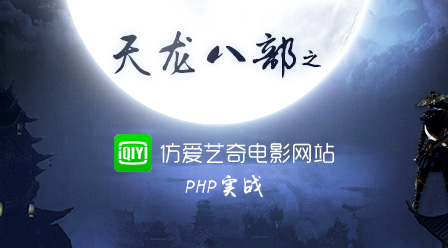前段时间,公司的测试环境中的mongo数据有一部分要导入到线上的环境。 开发给提供了一堆的ObjectId,而且要求导入到线上之后,这个ObjectId还不能变。 于是我就想用python来查询并且导入到线上。顺便也学习下用python操作mongodb, 结果遇到一个坑。 这段时
前段时间,公司的测试环境中的mongo数据有一部分要导入到线上的环境。
开发给提供了一堆的ObjectId,而且要求导入到线上之后,这个ObjectId还不能变。
于是我就想用python来查询并且导入到线上。顺便也学习下用python操作mongodb,
结果遇到一个坑。
这段时间闲一些,于是就整理出来分享给大家。
一、首先是安装python的pymongo模块:
三种安装方式pip/easy_install/源码
#//pip pip install pymongo #//easy_install easy_install pymongo #//源码 wget https://pypi.python.org/packages/source/p/pymongo/pymongo-2.7.tar.gz tar zxvf pymongo-2.7.tar.gz cd pymongo-2.7 python setup.py install
原文地址:http://www.linuxyan.com/shell/320.html
二、使用:
#!/usr/bin/python
import pymongo
import time
conn = pymongo.Connection("127.0.0.1",27017)
db = conn.test #连接库test
db.authenticate("tage","123") #用户认证
#//插入数据,_id自动创建
post = {"id": "1",
"author": "Mike",
"text": "My first blog post!",
"tags": ["mongodb", "python", "pymongo"],
"date": time.strftime('%Y-%m-%d %H:%M:%S')}
posts = db.posts
posts.insert(post) #把post数据插入posts聚合(表)中,返回一个ObjectId('...')
#//批量插入(一个列表里面包含了2个字典),_id自动创建
new_posts = [{"id": "2",
"author": "Mike",
"text": "Another post!",
"tags": ["bulk", "insert"],
"date": time.strftime('%Y-%m-%d %H:%M:%S')},
{"id": "3",
"author": "Eliot",
"title": "MongoDB is fun",
"text": "and pretty easy too!",
"date": time.strftime('%Y-%m-%d %H:%M:%S')}]
posts = db.posts
posts.insert(new_posts) #把new_posts数据插入posts聚合(表)中,返回2个ObjectId('...')
#//删除数据
db.posts.remove() #删除posts聚合(表)中所有数据
db.posts.remove({'id':1}) #删除posts聚合(表)中id为1的数据
#//更新数据
db.posts.update({'id':1},{"$set":{"text":"cscscascs"}}) #更新一个value
db.posts.update({'id':1},{"$set":{"text":"cscscascs","title":"test title"}}) #更新多个value
#//查询数据
db.collection_names() #查询所有聚合名称
db.posts.count() #统计posts聚合中的数据数量
db.posts.find() #查询posts中所有内容
db.posts.find_one({"author":"Mike"}) #根据条件查询posts中数据
db.posts.find({"author":"Mike"}).sort('author') #--默认为升序
db.posts.find({"author":"Mike"}).sort('author',pymongo.ASCENDING) #升序
db.posts.find({"author":"Mike"}).sort('author',pymongo.DESCENDING) #降序原文地址:http://www.linuxyan.com/shell/320.html
三、遇到的坑
刚才插入数据成功的时候,会返回一个ObjectId(‘…’)
于是当我用{‘_id’:”ObjectId(‘…’)”}查询的时候缺什么都没查到
如下:
>>> import pymongo
>>> import time
>>> db = pymongo.Connection("192.168.xx.xx",27017).linuxyan
>>> posts = db.posts
>>> post = {"id": "1",
... "author": "Mike",
... "text": "My first blog post!",
... "tags": ["mongodb", "python", "pymongo"],
... "date": time.strftime('%Y-%m-%d %H:%M:%S')}
>>> posts.insert(post)
ObjectId('53bd5a5fe138235f74b67563')
#//插入数据成功
#//利用{'author':'Mike'} 测试查询正常
>>> posts.find_one({'author':'Mike'})
{u'_id': ObjectId('53bd5a5fe138235f74b67563'), u'author': u'Mike',....}
#//利用{'_id':"ObjectId('53bd5a5fe138235f74b67563')"}查询为空
>>>posts.find_one({'_id':"ObjectId('53bd5a5fe138235f74b67563')"})
#//如何利用ObjectId来查询?
>>> from bson import ObjectId
>>> posts.find_one({'_id':ObjectId('53bd5a5fe138235f74b67563')})
{ u'_id': ObjectId('53bd5a5fe138235f74b67563'), u'author': u'Mike',....}
#//原来ObjectId是一个对象,而不是一个字符串,此时我只能"呵呵",折腾两个多小时。






Copyright 2014-2023 //m.sbmmt.com/ All Rights Reserved | 苏州跃动光标网络科技有限公司 | 苏ICP备2020058653号-1
| 本站CDN由 数掘科技 提供